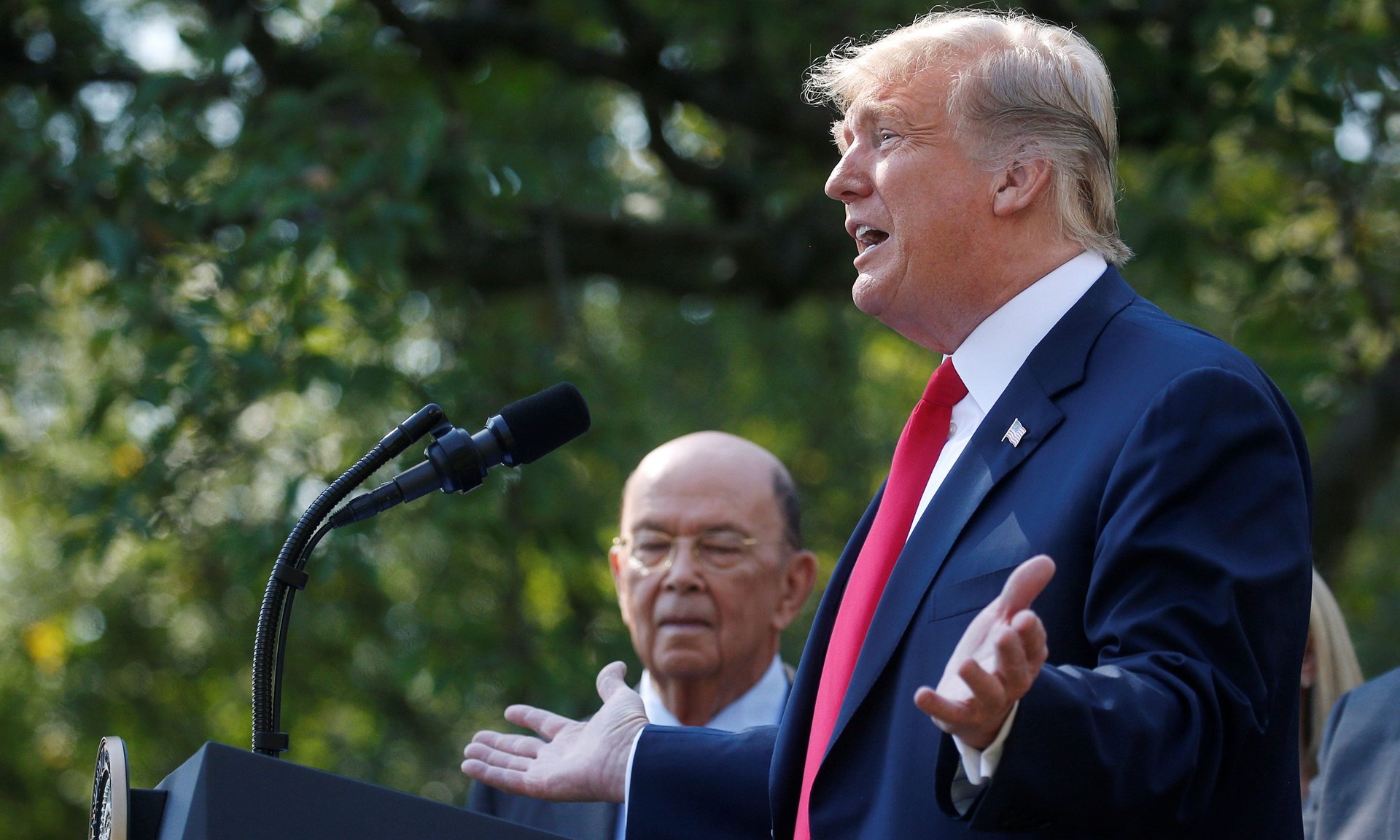The Trump trade doctrine: Threaten, backtrack, declare victory, repeat
Donald Trump dubbed NAFTA “the worst trade deal maybe ever signed anywhere” and threatened multiple times to cut Canada from the three-nation pact or just terminate the entire thing.


Donald Trump dubbed NAFTA “the worst trade deal maybe ever signed anywhere” and threatened multiple times to cut Canada from the three-nation pact or just terminate the entire thing.
Yes, the new United States Mexico Canada Agreement deal announced today (Oct. 1) has some important tweaks. Yet it is hardly a radical overhaul. Trump called it “truly historic news for our national and the world,” in a Rose Garden press conference, but trade experts were less bombastic. USMCA is “another victory of common sense over posturing,” said Steve Nelson, a partner with Dorsey & Whitney who is a former State Department lawyer, echoing general sentiment.
One way to never lose
It’s a familiar pattern for the Trump presidency. Call it “Speak Loudly and Carry a Tiny Stick,” or Trump’s “madman” negotiating style. What it boils down to is making a massive threat that would upend the global order, then walking that back, while declaring victory to loyal Trump fans at home, no matter what happened. Other examples include:
North Korea After threatening to “totally destroy” North Korea last year, Trump met with Kim Jong Un in a Singapore summit that was more flash than substance. The two countries still don’t have an agreement on North Korea’s denuclearlization, and statements from Pyongyang suggest Kim is not prepared to give up any weapons unless the US lifts sanctions. Nonetheless, Trump declared his talks with Kim part of a “bold and new push for peace” at the UNGA last week and has trumpeted his success at political rallies.
Steel tariffs In May, the administration put across-the-board tariffs on billions of dollars in US steel imports, most of that from US allies, declaring them a threat to US national security an pledging to restore the US steel industry to its mid-1900s glory. With today’s announcement, tariffs on Mexican and Canadian steel could be rescinded; many other nations have already made concessions to have tariffs lifted. US steel is “coming back very strongly,” Trump claimed at a rally this summer, and said US Steel is opening multiple domestic factories. While US production is up slightly, there’s no truth to the claim about factories, a US Steel spokeswoman said.
NATO Trump called the NATO defense agreement “unsustainable” and has railed for months against how “unfair” it is that the US’s closest allies spend less than the US on defense. This July he threatened to withdraw the US from the agreement, then claimed his threats had encouraged member nations to increase their spending (they denied that). Since then the State Department has confirmed the US’s commitment to the group, while Trump has bragged at rallies that he forced European powers to get their “checkbooks out.”
On the domestic front Trump has also promised (but not yet delivered) a radical new approach to gun safety, the termination of the Deferred Action for Childhood Arrivals policy, and to build a wall on the US’s southern border paid for by Mexico. None of these things has happened as he has declared they would. Trump threatened during an August rally to shutdown the government if he didn’t get wall funding, but did not.
At some point, a bluff is just a bluff
Administration officials have long argued that the president’s tough talk is a negotiating tactic, one that gives the US an advantage by throwing off the other side. (And the administration has made radical changes in other areas, particularly in regulation of US companies and US immigration policy.)
There’s some truth to that. Foreign leaders could be advised to “be very cautious with these people because they are crazy, and you don’t know what they will do,” Stephen Biddle, senior fellow at the Council of Foreign Relations, has said.
One problem with the Trump style of negotiation is that unpredictability risks becoming predictable, trade experts and negotiators say. “If you’ve done something multiple times and people learn it’s a bluff, it stops working,” said Patrick Chovanec, managing director and chief strategist at Silvercrest Asset Management